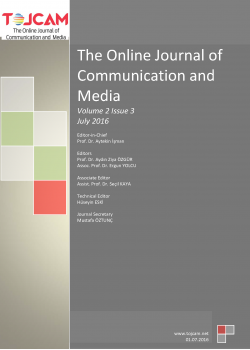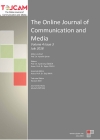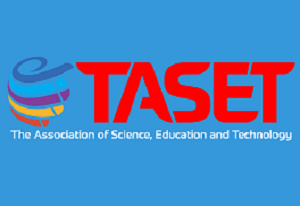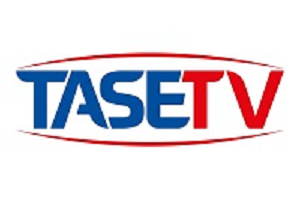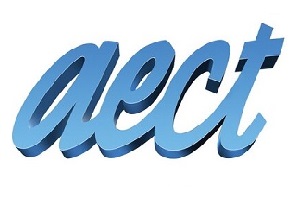TOJCAM - Volume 2 - Issue 3 - July 2016
 COMIC STRIP AND SCIENCE COMMUNICATION SCICOM NARRATIVES
COMIC STRIP AND SCIENCE COMMUNICATION SCICOM NARRATIVES Aquiles Negrete Yankelevich
Abstract:
In Latin America the majority of studies on communication of science by
means of the media are focused on newspapers and television programs, because they
represent the most effective way –in terms of time and money—to study a mass
communication medium. However, there are other important ways to communicate
science, of which we have meagre information, or about which little has been reported.
Such is the case of cultural narrative media like novels, short stories, theatre, comic
strips, etc. Narrative knowledge is a legitimate form of reasoned knowledge; nowadays,
many scientists acknowledge that narrative cognition generates useful and valid
knowledge. Narrative is particularly important in Latin America, as it not only
represents a vehicle for information for anyone who has left the classroom years ago
and needs to be updated, but is also useful for teaching isolated groups with little
schooling.
The importance of communicating science by means of narrative forms has been
suggested by several authors (McKnight, 2010; King, 2007; Schank et al, 2002;
Korkmaz, 2011; Frisch, 2010; Lanza and Negrete, 2007; Rios and Negrete, 2013). In
previous work (Negrete, 2014), I have denominated the narratives designed to
communicate science as SciCom Narratives where the acronym refers to Science
Communication. In this research I propose that comics (a form of SciCom Narratives)
represent an opportunity to communicate scientific information and present an example
of the use of comics in communicating medical information about AIDS.
In Mexico comic strips are a narrative cultural medium that is deeply established in
national culture, as it is the principal access to reading for millions of inhabitants. On
the other hand, AIDS in Mexico has been considered as one of the country’s major
health problems. The aim of this paper is to analyze the narrative (and visual) structure
of two of the most popular comic strips in the country, with the perspective of using this
medium –that is already recognized as an effective communication channel with the
public in general—to disseminate scientific medical information about AIDS.
 CONSTRUCTING KNOWLEDGE SOCIETIES: PUBLIC COMMUNICATION OF SCIENCE (PCS) AS A CULTURAL PRACTICE OF THE SCIENTIFIC COMMUNITY IN MEXICO
CONSTRUCTING KNOWLEDGE SOCIETIES: PUBLIC COMMUNICATION OF SCIENCE (PCS) AS A CULTURAL PRACTICE OF THE SCIENTIFIC COMMUNITY IN MEXICO M. En F. C. Rosalba Namihira Guerrero
Abstract:
Knowledge societies (Olive 2012) require Public Communication of Science
(PCS) to become a cultural practice of the scientific community. Communicating
scientific work, and promoting critical thinking, provides society with better elements to
identify and solve their problems, make appropriate decisions to their particular
situation, and take part in the use, promotion and regulation of scientific knowledge and
its application (OECD, 2003).
To know how researchers in Mexico establish these kinds of practices, we designed an
exploratory quantitative study, based on a survey among members of the National
Researchers System (SNI).
With the collaboration of the Consejo Nacional de Ciencia y Tecnología (CONACYT)
and the Academia Mexicana de Ciencias (AMC), the Direccion General de Divulgacion
de la Ciencia (DGDC) opened an online questionnaire from February 10, to March 10,
2014.
The results of a sample equivalent to 20 percent of the SNI showed that participants
consider it important to communicate their research to audiences outside academia but
they pointed out, there are not enough funds or forums to accomplish it. From their
point of view, evaluations do not take into account properly these activities. Another
relevant point was the need to include Public Communication of Science (PCS) in the
study plans of scientific careers, and the public’s participation in the definition of
policies related to science and technology (S&T). Notwithstanding, researchers’
answers reflected that even though they are interested in social engagement, their
communication with particular sectors (indigenous communities, politicians, NGO’s,
and other groups) is still weak. They perceive science outreach as an opportunity to
educate people, but not yet as a commitment to discuss with the public their concerns
regarding science and its applications in society.
 CONTROVERSY SURROUNDING THE ‘FAKE NEWS’: DESCRIPTIVE ANALYSIS OF THREE MAJOR NEWSPAPERS IN SOUTH KOREA
CONTROVERSY SURROUNDING THE ‘FAKE NEWS’: DESCRIPTIVE ANALYSIS OF THREE MAJOR NEWSPAPERS IN SOUTH KOREA Mahnwoo KWON, Yongwoo Jun, Hajin Im
Abstract:
This paper is a report on the findings of a study conducted on a graduate level virtual conference summer school course. Discourse analysis formatted classes.
 EDUCATION TECHNOLOGY CHANGING FACE OF SCHOOL LIBRARY SCIENCE AND SCHOLARLY COMMUNICATION AREA IN K12
EDUCATION TECHNOLOGY CHANGING FACE OF SCHOOL LIBRARY SCIENCE AND SCHOLARLY COMMUNICATION AREA IN K12 Şebnem Gürsoy Ulusoy, Özge Gürsoy Atar
Abstract:
The theoretical framework is important to understand communication
between technology, communication and school library science changing face of
Turkey. “Empowering Learners: Guidelines for School Library Media Programs
(AASL, 2009) charges school librarians “to play a leading role in weaving such skills
throughout the curriculum so that all members of the school community are effective
users of ideas and information” (Johnston, 2015, 17). Changing first start in human
culture, the internet is giving a change for people to communicate the World and other
people. Find the information is very easy in 21st century but the important difficulties
come to same time. This problem is find the true knowledge problem. “The last three
decades have been marked by the gradual digitalisation of human culture, knowledge
and learning. Evolving digital media and technologies – such as computers, the internet
and mobile devices – have been constantly generating new waves of promises and
fads.” (Markauskaite, 2010, 79). The face of communication and education change with
technology. Digital devices and social media is usefull for peoples communication
process. Technological artefacts and computers could be useful for assisting with or
doing some traditional cognitive tasks. (Markauskaite, 2010, 92). Traditional
communication process start with oral culture. Walter J. Ong said that “The
Technologizing of the Word” his book of Orality and Literacy. Firstly oral culture start
with the first communication process. People telling and memorize the culturel things.
Second of them is literacy when the first letter of semitic alphabet using this literacy
culture process is starting. “When this is all said, however, about the Semitic alphabet,
it does appear that the Greeks did something of major psychological importance when
they developed the first alphabet complete with vowels. (Ong, 2002, 5). This research
about the 21st century school library science scholarly communication process changing
with technological development and case study for Turkey.
 THE VIEWS OF THE STUDENTS WHO ATTEND AND DON'T ATTEND THE ADVERTISING ETHICS COURSES: THE CASE OF FACULTY OF COMMUNICATION, UNIVERSITY OF ERCÄ°YES
THE VIEWS OF THE STUDENTS WHO ATTEND AND DON'T ATTEND THE ADVERTISING ETHICS COURSES: THE CASE OF FACULTY OF COMMUNICATION, UNIVERSITY OF ERCÄ°YES Mustafa AKDAÄž, Nilay AKGÃœN AKAN
Abstract:
In today's world, with the advance of technology advertising is becoming an
inevitable fact that diffuses every point of social life. While the effort of advertising,
which has a big role in the presentation and the consumption of a product or a service,
in taking part in every second of life brings forth an assortment of advertisements; due
to intense competition and the efforts of the companies to become popular,
advertisements emerge in unexpected times and places free from the boundaries of time
and space. This situation makes the notion 'ethics' a more and more important concept in
the field of advertising as it is in all the fields of communication. An advertisement
without moral values may affect a very big part of the community. Therefore, when the
effects of advertising on the society are considered in the context of morals and when
the messages are designed in this direction, in other words when acted in consciousness
of social responsibility, advertising will then be useful. In this study, in order to see
whether the classes of advertising. Ethics bring about some difference in the points of
views of the students or not, some questions are related with the advertising ethics are
directed to the young communicators who are still in the process of education and the
answers are interpreted. As a result, it is possible to say that ethics is important and
worth-considering when it is adopted by the people who see advertising a profession
and who are taking an education in this branch.
 YOUTH PARTICIPATION IN NATIONAL AGENDA THROUGH NEW MEDIA
YOUTH PARTICIPATION IN NATIONAL AGENDA THROUGH NEW MEDIA Norshuhada Shiratuddin, Shahizan Hassan, Mohd Khairie Ahmad, Kartini Aboo Talib, Mohd Azizuddin Mohd Sani, Nurul Labanihuda Abd Rahman, Ahmad Affandi Supli, Zainatul Shuhaida Abd Rahman
Abstract:
The importance of youth participation in decision making process in nation
building should not be underestimated. Studies have shown that youth in the
marginalized communities have lack of opportunities to get engaged in a democratic
process. However, the advent of media technology provides an opportunity for the
authority to tackle this problem. Henceforth, how participation of youth who are at risk
in the marginalized communities can be increased through the use of media is
undertaken. To measure the media participation among youth, focus groups were
conducted to investigate the issues preferred to be engaged by the youth, the contents to
be produced as participation manifestation while exploring youth web based skills. The
findings indicate that there are three issues to be highlighted which are economy
political and social issues. In exploring the youth participation, a website for youth,
called Y4M: youth for Malaysia, which has three main web broadcasting sub-menus:
web tv, web radio, and web journalism is produced as a gateway for the youth to voice
their opinions.

